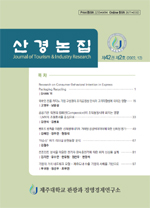지방자치단체 재무회계정보의 신뢰성이 나아지고 있는가?
Is the Reliability of Local Government Financial Accounting Information Improving?
- 제주대학교 관광과경영경제연구소
- 산경논집
- Vol. 43 No. 2
-
2023.1249 - 68 (20 pages)
-
DOI : 10.24907/JTIR.2023.43.2.49.
- 211

본 연구의 목적은 발생기준·복식부기를 적용한 지방자치단체 재무회계가 도입된 지 16년이 지나고 있는 시점에 지방자치단체 재무제표 정보의 신뢰성이 나아지고 있는지를 벤포드법칙을 이용하여 검증하였다. 벤포드 법칙은 자연 발생적인 숫자 집단에서 임의로 선택한 수치의 첫째 자리 숫자는 1이 가장 많이 나타나고, 2에서 9로 갈수록 그 빈도는 현저히 줄어드는 현상이다. 자산과 부채 수치 첫째 자리 숫자의 분포가 벤포드 법칙에 의한 벤포드 분포와 떨어진 정도를 비교하여 숫자의 신뢰성을 추정하였다. 분석 결과, 지난 16년간의 자산 및 부채 수치는 MAD 검정 결과 값 및 KS 통계량은 임계치를 초과하여 여전히 벤포드 분포를 따르지 않고 있음을 확인하였다. 발생기준・복식부기 회계제도 도입 초 8년간(2016-2013) 및 재무제표가 지방자치단체의 결산서에 의무 제출 서류로 포함하기 시작한 후 8년간(2014-2021)의 각각의 재정상태표의 자산 및 부채 수치도 벤포드 분포를 여전히 따르고 있지 않았다. 이를 개선하기 위해 지방자치단체 재무보고서의 외부 감사인의 낮은 확신단계의 검토 수준에서 지방자치단체의 예산규모에 따른 단계적 독립적인 외부감사제도 도입 등을 고려할 필요가 있다.
It has been 16 years since financial accounting for local governments using accrual based double-entry bookkeeping was introduced. The purpose of this study is to verify whether the reliability of financial statement information of local governments is improving by using Benford's Law. The reliability of the numbers was estimated by comparing the distribution of the first digit of the assets and liabilities with the Benford distribution. As a result of the analysis, it is confirmed that the assets and liabilities for the past 16 years did not follow the Benford distribution as the MAD test result value and the KS statistic exceeded the critical value. Assets and assets in each statement of financial position for the first 8 years of the introduction of the accrual-based double-entry bookkeeping system and for the first 8 years after financial statements began to be included as mandatory documents in the settlement of accounts of local governments. Liabilities figures still does not follow the Benford distribution. We suggest that there is a need to move from a simple review system to an audit system for local governments' financial statements.
Ⅰ. 서론
Ⅱ. 이론 및 선행연구 검토
Ⅲ. 연구방법
Ⅳ. 실증분석
Ⅴ. 결론 및 시사점
참고문헌
(0)
(0)